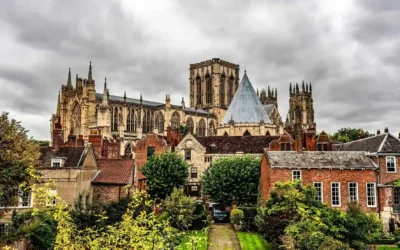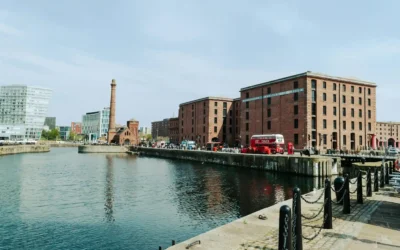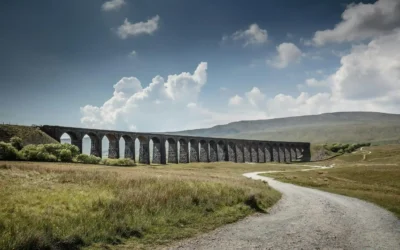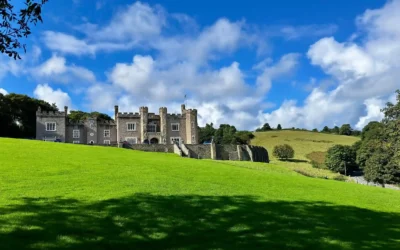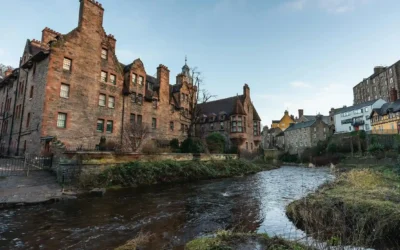London Underground | Everything You Need to Know
London Underground | Everything You Need to Know
Step into the heart of London’s transport network with the London Underground, affectionately known as the Tube, the world’s first underground railway system, opened in 1863. Spanning 11 lines and 272 stations across Greater London and parts of Buckinghamshire, Essex, and Hertfordshire, the Tube is a vital lifeline for up to 5 million passengers daily. Whether you’re a tourist eager to visit iconic landmarks like Buckingham Palace or a commuter navigating the city’s fast-paced rhythm, the Tube offers a convenient, efficient, and quintessentially British experience.
From the historic charm of the Metropolitan line to the sleek modernity of the Elizabeth line, each journey blends Victorian engineering with 21st-century innovation. Grab your Oyster card, mind the gap, and explore everything the London Underground has to offer.
Location
The London Underground is not a single destination but a vast rapid transit network covering Greater London and parts of Buckinghamshire, Essex, and Hertfordshire. With 272 stations across 11 lines, it spans nine fare zones, with Zone 1 encompassing central London’s key hubs like King’s Cross St Pancras, Oxford Circus, and Piccadilly Circus. The network extends to suburban areas in Zones 2–9, reaching as far as Amersham (Metropolitan line) and Upminster (District line). To locate the nearest station, use the iconic Tube map, available free at all stations, or Transport for London’s (TfL) journey planner at TfL’s website. The Tube connects seamlessly to major transport hubs, including Heathrow Airport (Piccadilly line) and major train stations like Paddington and Victoria.
Opening Hours
The London Underground operates daily with varying hours depending on the line and day:
| Day | Typical Hours | Notes |
| Monday–Saturday | 5:00 AM–12:00 AM | Some lines start earlier or end later |
| Sunday | 7:00 AM–11:30 PM | Reduced hours, varies by line |
| Night Tube (Friday–Saturday) | 24-hour service | Central, Jubilee, Northern, Piccadilly, Victoria lines; not all stations open |
The Night Tube runs 24 hours on Fridays and Saturdays on select lines (Central, Jubilee, Northern, Piccadilly, and Victoria), but some stations, like Terminal 4 at Heathrow, are excluded. Special schedules apply on holidays, with early closures on Christmas Eve and no service on Christmas Day. Check TfL’s first and last Tube times or the TfL Go app for precise schedules and updates on engineering works or closures.
How to Get There
As a transport system, accessing the London Underground means finding the nearest station to your starting point. Key entry points include:
- Airports:
- Heathrow: Piccadilly line (Terminals 2, 3, 4, 5; 50 minutes to central London).
- Gatwick: Victoria line via Gatwick Express to Victoria (30 minutes).
- Luton: Thameslink to Farringdon or King’s Cross from Luton Airport Parkway.
- Stansted: Stansted Express to Liverpool Street (47 minutes).
- London City: DLR to Bank or Tower Gateway.
- Train Stations: Major National Rail stations like King’s Cross St Pancras, Paddington, Euston, and Victoria connect directly to the Tube.
- Bus Stations: Victoria Coach Station and other bus hubs are near Tube stations (e.g., Victoria station).
Within London, stations are well-signposted, and the TfL Go app or TfL’s journey planner helps locate the nearest station and plan routes. For drivers, parking is limited near central stations, but some outer stations offer car parks; check TfL’s station car parks. For real-time traffic updates, use apps like Waze.
Best Time to Visit
The London Underground operates year-round, but the best time to travel depends on your needs:
- Tourists: Travel during off-peak hours (after 9:30 AM weekdays, all day weekends) for lower fares and fewer crowds. Off-peak fares apply outside Monday–Friday 6:30 AM–9:30 AM and 4:00 PM–7:00 PM.
- Commuters: Avoid peak hours to experience shorter waits and less congestion.
- Special Events: Major events like the London Marathon or New Year’s Eve can increase crowds or lead to closures. Check TfL’s service updates for planned works or event-related changes.
Spring (March–May) and autumn (September–November) are ideal for tourists due to milder weather and fewer crowds compared to summer or holiday seasons. The indoor nature of the Tube makes it a reliable option on rainy days.
Tickets and Costs
The London Underground uses a zone-based fare system, with costs varying by time of day and zones traveled. Payment options include:
| Payment Method | Description | Cost |
| Oyster Card | Reusable smartcard for pay-as-you-go travel | £7 (refundable deposit) + top-up credit |
| Contactless Payment | Debit/credit card or mobile payment (e.g., Apple Pay) | Same as Oyster fares |
| Travelcard | Unlimited travel for a day, week, or longer | From £15.90/day (Zones 1–2) |
| Paper Tickets | Single or return tickets | From £7.00 (Zones 1–6, cash) |
Fares (as of March 2025):
- Single Journey: £2.80 (off-peak, Zone 1), £2.90 (peak, Zone 1); higher for more zones.
- Daily Cap: £8.50 (off-peak, Zones 1–2), £12.80 (peak, Zones 1–2), up to £15.90 (peak, Zones 1–9).
- Weekly Travelcard: £45.20 (Zones 1–2), £102.60 (Zones 1–9).
Discounts:
- Children under 11 travel free with an adult.
- Ages 11–15 pay half adult fares with a Zip Oyster photocard.
- Students, seniors, and disabled travelers may qualify for discounts; check TfL’s fares.
- Carers enter free with a paying guest (proof required).
Purchase Oyster cards or Travelcards at Tube stations, online at TfL’s website, or at newsagents. Contactless payments are accepted at all stations. Book in advance for the best rates and to avoid queues.
What to Expect
Traveling on the London Underground is a unique blend of history, efficiency, and urban energy:
- The Journey: Trains arrive every 2–10 minutes, with journeys like Westminster to Camden Town taking about 15 minutes. The network’s 250 miles of track ensure quick connections across London.
- The Atmosphere: Expect a bustling mix of commuters, tourists, and locals. Each line has a distinct vibe, from the historic Metropolitan line’s red-brick stations to the Elizabeth line’s sleek, modern design.
- Key Sights: The iconic Tube map, designed by Harry Beck in 1931, is a navigational masterpiece. Many stations feature art, such as mosaics at Tottenham Court Road or sculptures at Canary Wharf.
- Facilities: Stations offer ticket machines, information desks, and restrooms (some with fees). Larger stations have shops and cafes.
- Unique Features: Look for “Poems on the Underground” posters, buskers performing at select stations, and the distinctive “Mind the Gap” announcements.
A typical journey lasts 10–50 minutes, depending on distance. Download the TfL Go app for real-time updates and route planning.
Safety and Accessibility
The London Underground prioritizes safety and accessibility:
- Safety:
- CCTV monitors all stations and trains.
- Staff are present at major stations, with emergency help points on platforms.
- British Transport Police can be contacted at 0800 40 50 40 or text 61016; call 999 in emergencies.
- Keep belongings secure in crowded carriages and follow “Mind the Gap” warnings.
- Accessibility:
- Step-free access is available at 92 stations (e.g., King’s Cross, Green Park); check TfL’s accessibility guide.
- Wheelchair users can request assistance via the TfL Go app or by calling 0343 222 1234.
- Hearing loops are available at ticket offices and some platforms.
- Guide dogs are welcome, with designated areas for assistance dogs.
- Family-Friendly Features: Strollers are allowed, but some stations have steps. Children under 11 travel free, and baby-changing facilities are available at major stations.
TfL is expanding step-free access, with ongoing upgrades to more stations.
History and Background
The London Underground began with the Metropolitan Railway in 1863, the world’s first underground passenger railway, connecting Paddington to Farringdon with steam-powered trains. The network expanded with the District and Circle lines, followed by deep-level “tube” lines like the City & South London Railway (1890), the first to use electric trains. In 1902, the Underground Electric Railways Company of London (UERL) unified several lines, introducing the iconic red roundel logo.
By 1933, London Transport merged the Underground, buses, and trams under one authority. Today, operated by Transport for London (TfL), the network includes modern additions like the Elizabeth line (2022) and supports global conservation through fare revenue.
Fun Facts:
- Hampstead station (Northern line) is the deepest, at 58.5 meters below ground.
- The longest distance between stations is Chesham to Chalfont & Latimer (Metropolitan line), at 6.3 kilometers.
Learn more at TfL’s history page.
Nearby Attractions
The London Underground connects you to London’s top attractions:
- Buckingham Palace: Green Park or St James’s Park (Victoria line), 5-minute walk.
- British Museum: Holborn or Russell Square (Central, Piccadilly lines), 5-minute walk.
- Tower of London: Tower Hill (Circle, District lines), 3-minute walk.
- Westminster Abbey: Westminster (Circle, District, Jubilee lines), 2-minute walk.
- Covent Garden: Covent Garden (Piccadilly line), direct access.
- Shoreditch and Brick Lane: Shoreditch High Street (London Overground), 5-minute walk.
Plan a day combining these sites, using the Tube for quick, seamless travel.
Practical Tips
- Get a Map: Pick up a free Tube map at any station or download it from TfL’s website.
- Use the Journey Planner: Plan routes via TfL’s journey planner to minimize transfers.
- Tap In and Out: Always tap your Oyster or contactless card on yellow readers to ensure correct fares.
- Avoid Peak Times: Travel after 9:30 AM or on weekends for fewer crowds and cheaper fares.
- Dress Comfortably: Wear layers and sturdy shoes, as stations vary in temperature and involve walking.
- Follow Etiquette: Stand on the right on escalators, let passengers alight first, and offer seats to those in need.
- Stay Safe: Keep belongings secure and use TfL’s safety resources, like texting 61016 for non-emergencies.
- Download the App: The TfL Go app provides real-time updates on delays and station accessibility.
FAQs
What are the opening hours of the London Underground?
Trains run from 5:00 AM to midnight Monday–Saturday, 7:00 AM–11:30 PM Sundays. Night Tube operates 24 hours on Fridays and Saturdays on select lines (Central, Jubilee, Northern, Piccadilly, Victoria). Check TfL’s schedules.
How much does it cost to travel on the London Underground?
Single fares start at £2.80 (off-peak, Zone 1) or £2.90 (peak). Daily caps range from £8.50 (off-peak, Zones 1–2) to £15.90 (peak, Zones 1–9). Weekly Travelcards start at £45.20 (Zones 1–2). Use Oyster or contactless for savings.
Is the London Underground suitable for children?
Yes, children under 11 travel free with an adult, and ages 11–15 pay half fares with a Zip Oyster photocard. Strollers are allowed, but some stations have steps.
Are there any discounts available for the London Underground?
Children under 11 travel free, ages 11–15 get half fares, and students/seniors may qualify for discounts. Carers travel free with a paying guest (proof required).
How long does a typical journey take on the London Underground?
Journeys vary, but central London trips (e.g., Westminster to Camden Town) take 10–15 minutes. Longer trips, like Heathrow to Zone 1, take about 50 minutes.
Is photography allowed on the London Underground?
Yes, for personal use, but avoid flash and tripods. Professional photography requires TfL permission.
Are there guided tours available for the London Underground?
TfL offers occasional heritage tours of historic stations like Aldwych; check TfL’s events. The Tube map and app guide self-directed travel.
What’s the best way to get to the London Underground from the city center?
Most central London locations are near a Tube station (e.g., Oxford Circus, Piccadilly Circus). Use TfL’s journey planner to find the closest station.
Is the London Underground wheelchair accessible?
Yes, 92 stations offer step-free access. Wheelchairs can be hired, and assistance is available via the TfL Go app or TfL’s accessibility page.
Are there dining options near London Underground stations?
Major stations like King’s Cross and Victoria have cafes and restaurants. Nearby attractions like Covent Garden offer extensive dining options.
York Minster | Everything You Need to Know
York Minster | Everything You Need to Know York Minster, formally the Cathedral and Metropolitical Church of Saint Peter in York, stands as a beacon of Gothic architecture and Christian heritage in York, North Yorkshire, England. As the seat of the Archbishop of York,...
Royal Albert Dock Liverpool | Everything You Need to Know
Royal Albert Dock Liverpool | Everything You Need to Know Welcome to the Royal Albert Dock Liverpool, a vibrant waterfront destination that captures the heart of Liverpool’s maritime heritage and modern cultural scene. Opened in 1846 and granted a royal charter in...
National Railway Museum | Everything You Need to Know
National Railway Museum | Everything You Need to Know Step into the fascinating world of rail transport at the National Railway Museum in York, England, widely regarded as the largest railway museum in the world. Housed in expansive railway sheds, this museum offers...
Alton Towers Resort | Everything You Need to Know
Alton Towers Resort | Everything You Need to Know Escape to the exhilarating world of Alton Towers Resort, Britain’s greatest theme park and a premier destination for thrill-seekers and families alike. Spanning over 500 acres of stunning Staffordshire countryside,...
Edinburgh Old Town | Everything You Need to Know
Edinburgh Old Town | Everything You Need to Know Step into the historic heart of Scotland’s capital with a visit to Edinburgh Old Town, a UNESCO World Heritage Site since 1995. This medieval district, stretching from the imposing Edinburgh Castle to the elegant Palace...

